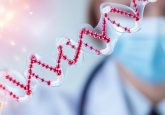Ask the Experts: Timothy Garrett

Timothy J Garrett earned his Bachelor’s in Chemistry from the University of Georgia (Athens, GA) in 1999. After working in industry for a couple of years, he returned to school for graduate study at the University of Florida (Gainesville, FL) where he earned a Doctor of Philosophy in 2006. Dr Garrett then translated to an Assistant Professor position in the College of Medicine at the University of Florida, and assumed operation of the Biomedical Mass Spectrometry facility. He has focused his work on expanding the use of MS in clinical sciences through education, analysis, and collaboration.
At present, Dr Garrett has collaborated with over 30 faculty members at the University of Florida. Dr Garrett is currently an Associate Professor in the Department of Pathology, Immunology and Laboratory Medicine at the University of Florida. He is Director of the high-throughput MS metabolomics core of the Southeast Center for Integrated Metabolomics (SECIM) and works closely with University of Florida PathLabs to grow and expand MS services for diagnostics.
What molecules do you predominantly work with, and (how/why) do you use HRMS for their analysis?
I work with endogenous small molecules for metabolomics. We perform global metabolomic studies to identify biomarkers of disease, treatment, or other biological factors. HRMS is essential in the identification of metabolites.
Do you use HRMS predominantly for quantitative or qualitative analysis or both? Why?
We use HRMS for both, but predominantly qualitative work. Qualitative work allows us to provide a broad overview before setting up a targeted analysis on a smaller set of metabolites, but still using HRMS.
What are the main advantages of HRMS vs triple quadrupole MS?
HRMS maintains the ability to perform MS/MS, but adds both high resolving power and high mass accuracy thus providing two additional methods for differentiation of the target species from noise or background. The downside of HRMS is the limited dynamic range that is provided by a triple quadrupole.
For more information and resources on HRMS, check out our Spotlight
Do you believe that guidance from regulatory agencies is applicable and sufficient? What more could be done?
I’m not an expert in this, but I do see a gap in how we deal with quality control of multiple metabolites in a single run compared to a single analyte.
Are there currently any knowledge gaps within the field of HRMS? What could be done to overcome these?
I think some of the knowledge gaps are the capability of HRMS for quantitative analyses and the advantages of it. Access is sometimes an issue since many labs have a triple quadrupole, but may not have a HRMS. The other gap is user training. There is a need for training focused specifically on the application of HRMS for targeted and untargeted analyses. There are currently workshops on untargeted, but limited on targeted.
What are the biggest challenges for adoption of HRMS in your field?
My field is dominated by HRMS so this is not a limitation. The biggest challenge is informatics.
Are there any other challenges or limitations that interfere with your work that HRMS could assist with?
Yes, dealing with larger file sizes means the need for storage space at a much faster rate.
Last year, 81% of respondents to our HRMS Spotlight survey believed that HRMS quantitative and qualitative analysis would increase. What are your opinions on the future of HRMS?
I see it continuing to gain ground and used in a wider number of applications as instruments get cheaper.
Tandem MS vs HRMS – can you have one without the other?
I think tandem MS is an essential pairing with HRMS.
Our expert opinion collection provides you with in-depth articles written by authors from across the field of bioanalysis. Our expert opinions are perfect for those wanting a comprehensive, written review of a topic or looking for perspective pieces from our regular contributors.
See an article that catches your eye? Read any of our articles below for free.






